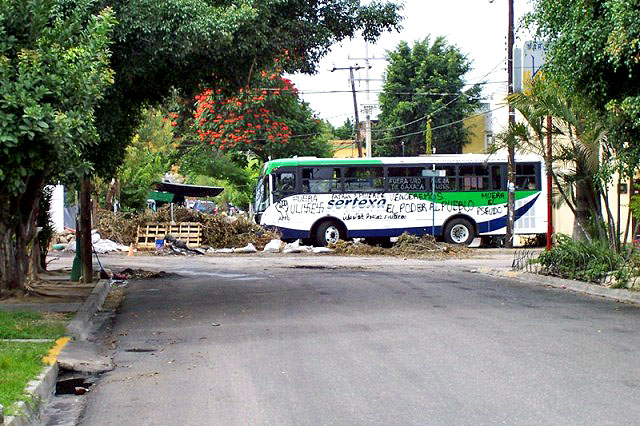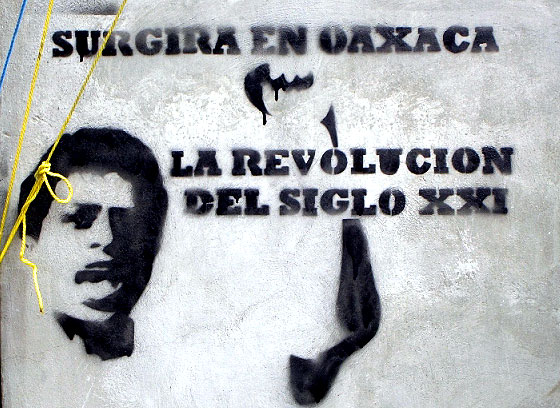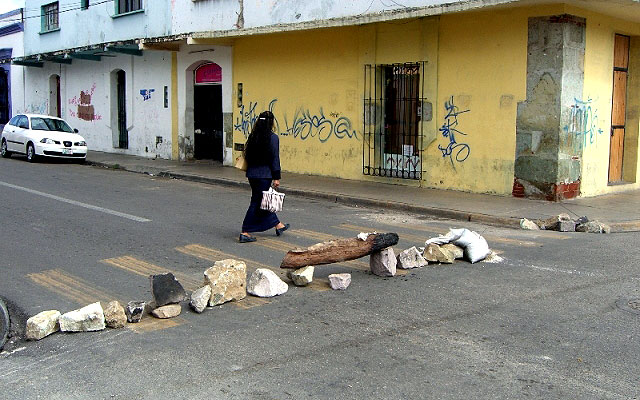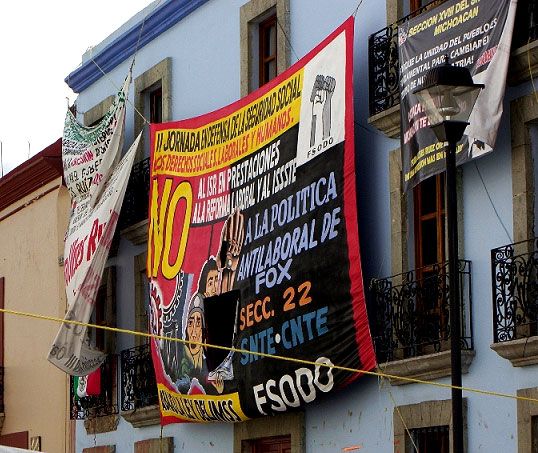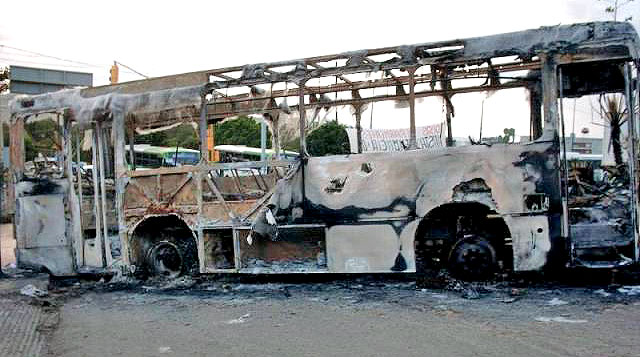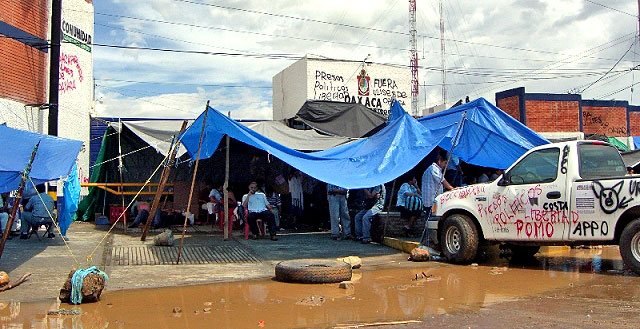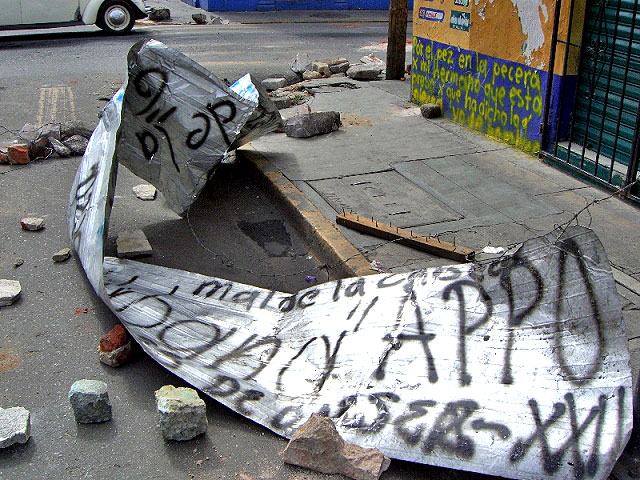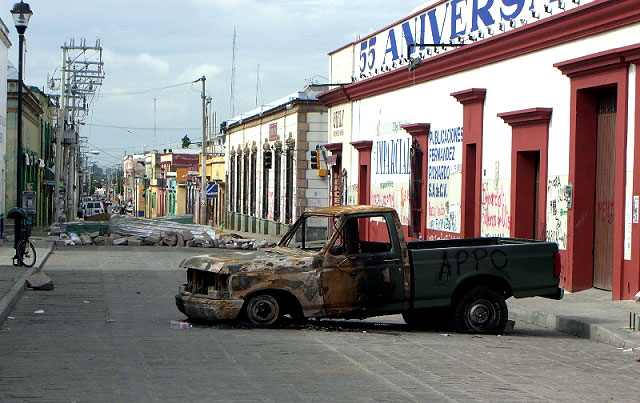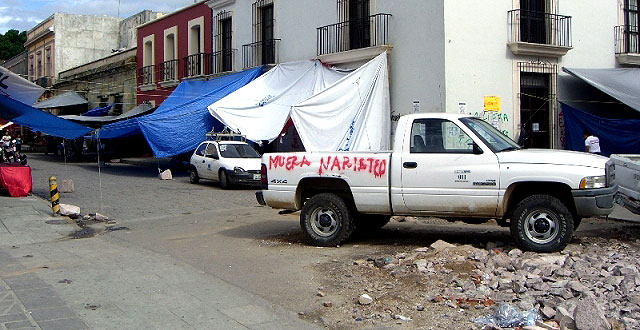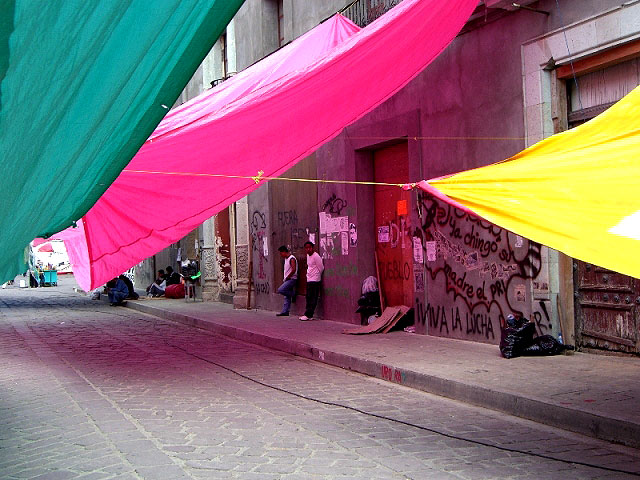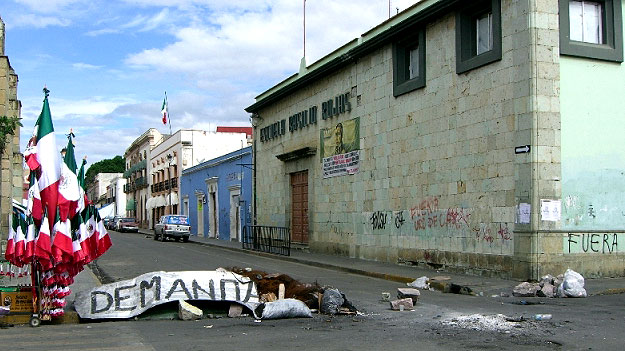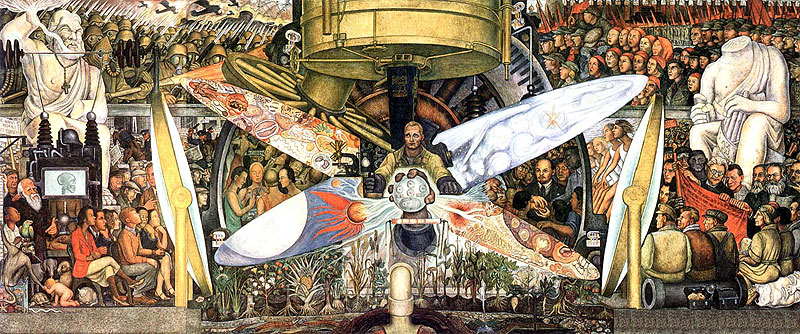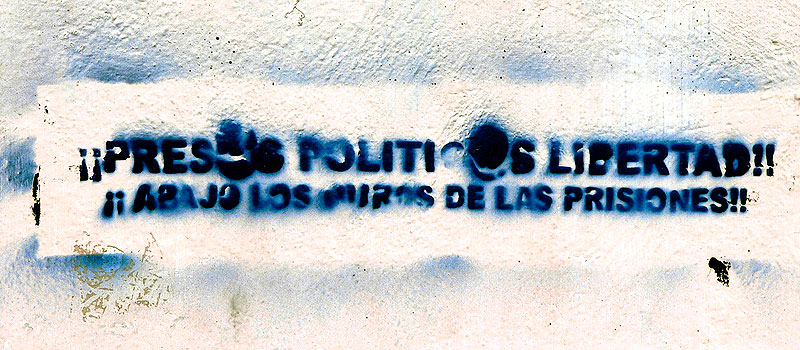SIPAZ Activities (April – June 2006)
31/07/20062006
01/01/2007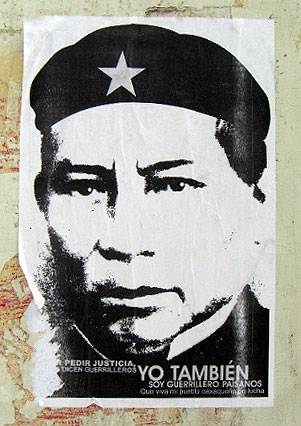 On Sunday October 29th, more than 4000 agents of the Federal Preventive Police (PFP) took over control of Oaxaca City’s historical center and various surrounding streets after having broken through the barricades with about 14 water cannon tanks. Initial reports issued by social organizations spoke of about 4 dead (including a minor), dozens injured, around 50 people arrested and about 50 houses raided. How did this happen?
On Sunday October 29th, more than 4000 agents of the Federal Preventive Police (PFP) took over control of Oaxaca City’s historical center and various surrounding streets after having broken through the barricades with about 14 water cannon tanks. Initial reports issued by social organizations spoke of about 4 dead (including a minor), dozens injured, around 50 people arrested and about 50 houses raided. How did this happen?
The city and the state of Oaxaca have been at the center of the Mexican political agenda since June. Something quite unusual since Oaxaca has always been one of the most neglected states, both economically and politically. On June 14th, a picket organized by Section 22 of the National Trade Union of Education Workers (SNTE) in the historical center of Oaxaca City was violently removed by the security forces, with a death toll of 4 and with 92 injured (according to trade union sources, without official confirmation). As a consequence of this, a trade union dispute that mainly demanded a pay raise for teachers suddenly turned into a much wider conflict involving different sectors and social movements of Oaxaca.
In order to understand these events, one needs to take into account the growing discontent provoked by the PRI government (PRI – Party of the Institutional Revolution) of Governor Ulises Ruiz since he was sworn in 2004 after a much disputed election and with a very narrow margin. His government has often been accused of being authoritarian and not respectful of human rights, with peasant and indigenous movements being violently repressed. The local newspaper Noticias de Oaxaca, critical of Governor Ulises Ruiz, was subjected to a month-long picketing of its office by members of the Workers and Peasants’ Revolutionary Confederation (CROC), a trade union said to have close ties with the government. Thirty-one newspaper staff were trapped inside for the entire duration of the picketing. The newspaper is still subjected to continuous threats. Other allegations of abuse against Ulises Ruiz’ government include the harassment of non-PRI local mayors to force them into supporting the PRI candidate for the 2006 presidential election, Roberto Madrazo, pending their possible dismissal from duty by the state congress, also ruled by the PRI.
This massive uprising was also caused by the structural poverty and marginalization that the state of Oaxaca and its people have suffered for centuries. It is, in fact, one of the poorest states of the Republic, together with Chiapas and Guerrero, and the one that has the largest indigenous population.
The resistance to the attempt by the security forces to disperse the teachers’ protest on June 14th united numerous movements that opposed the state government in one demand: the resignation of governor Ulises Ruiz.
For this purpose, a new city-wide picket was then set up in Oaxaca City (taking over streets, public buildings, radio and TV stations, etc) and the APPO (Popular Assembly of the People’s of Oaxaca) was created. The APPO started from the beginning to operate as a de facto government, agovernment in resistance,preventing security forces (for years perceived in Oaxaca as repressive and disrespectful of human rights) from entering the picketed zones; regulating various aspects of the city life and providing alternative information to contrast the official propaganda, through various radio stations and internet. Managing to bring together 300 organizations is in itself quite an achievement since, regardless of the traditional force of the social mobilization in Oaxaca, internal differences have usually caused divisions. At the same time, and thanks to this process, popular movements (gathering political parties, social organizations, trade unions etc.) in more than 20 municipalities of Oaxaca took over their town halls, forcing out all the mayors close to Governor Ulises Ruiz, and establishing themselves as the only legitimate governing authority.
By the end of October, the APPO and the teachers’ movement, which had controlled the city for approximately 5 months, had been subjected to various repressive actions: at least 10 killed; imprisonment of 5 of its leaders; harassment and threats, etc. On the other hand, some people began criticizing the excessive violence in the actions taken by the APPO and the teacher’s union as a de facto government, especially in terms of maintaining security in the city.
Home analysts praised the movement of Oaxaca as real hope and as a sign of a new awakening of the conscience of the people of Oaxaca, tired of the tyranny of the PRI. They dubbed the movement as the “Commune of Oaxaca”, therefore establishing a parallel with the Commune of Paris, a popular government that, pulling together various revolutionary movements, ruled the French capital during two months in 1871(*).
At the same time, strong criticism was voiced against the APPO for its violent nature (denied by the APPO), for the problems caused by the road blocks to the population and for the alleged real agenda of the teachers’ movement, all focused on trade union gains. There has also been an attempt to link the popular movement to guerrilla groups, an allegation that was strongly refuted as propaganda released by the state government to justify an intervention by the federal security forces (Federal Preventive Police or the Army).
To learn more about the human rights violations that were being committed, especially against the popular movement, in Oaxaca, the Oaxaca Human Rights Network (RODH) and the National Network ‘All Human Rights for All’ called for a civil observation mission to take place in September. SIPAZ took part in this mission detecting and reporting the existence of serious human rights violations: killings; arbitrary detentions of leaders and consequent fabrication of charges against them; de facto violation of the right to freedom of expression as well as continuous threats, creating a general climate of fear. All this seems to respond to a premeditated strategy of the state government to break down the movement. A preliminary version of the report prepared by the Civil Observation Mission (Misión Civíl de Observación) can be downloaded from the page dedicated to Oaxaca on SIPAZ’s website.(5)
During these months of crisis, the state government seemed to be heading to an imposition of public order with the use of force, asking for the support of the federal security forces to disperse the picket. Initially, however, the federal government which still had to deal with the consequences of the events in San Salvador Atenco in May, and which needed to protect its public image in view of the federal elections, opted for dialogue with the movement. For this purpose, a table of negotiation was established between APPO, the teachers’ trade union and the Minister of Interior. However, the negotiation was characterized for its lack of a real disposition to compromise: the APPO and the teachers’ union demanded the removal of governor Ulises Ruiz as non-negotiable and Carlos Abascal (Minister of the Interior) insisted on the lack of legal means for the federal government to remove a governor. This deadlock was in part motivated by the result of the federal elections of July 2nd. The protest vote against the PRI in Oaxaca led to the idea that calling for new state elections would probably produce a victory for the PRD.
Another option would be for governor Ulises Ruiz to ask to be relieved from office, in order for the state Congress (lead by the PRI majority) to appoint an interim governor.
There are, however, other interests at stake: the negotiations between PRI and PAN are characterized today by the narrow majority won by the PAN in the federal Congress, which forces it to collaborate with the PRI to govern more easily. In September, the APPO organized a massive march to Mexico City with the aim of demanding the “dissolution of powers” (desaparición de poderes), a constitutional legal figure that would imply the appointment by the Senate of a new state government.
Governor Ulises Ruiz has refused to resign, which has brought the conflict to a stalemate and paralyzed the institutions in Oaxaca. By mid-October, the Mexican armed forces had started to massively mobilize in the state of Oaxaca, dispatching land, sea and air units, causing fear of violent intervention. At the same time, the Ministry of Interior continued issuing a series of ultimatums in which he reiterated the resort to the use of force in case the teachers did not return to teaching and the APPO did not return control of the city to the authorities in Oaxaca City.
On Friday October 27th, a series of violent events occurred in Oaxaca City: 4 people were killed (including a US journalist) and several others were injured, in various parts of the city. According to some local human rights organizations, there is evidence of the participation of local police officials as well as organized groups, trained and armed by the state government, in these violent attacks against the opposition movements.
As a response to this situation, the federal government announced the intervention of federal security forces in Oaxaca. On Sunday the 29th, the PFP started to enter the city very early in the morning and, by nightfall it had taken control of the central square. The PFP was confronted by a pacific protest that tried to impede its passage with non-violent means. On the previous days, the APPO had issued a call to its supporters asking them not to react to provocations.
Acts of violence were, however reported, with different figures according to the various sources: while the APPO reported at least 4 casualties, the federal government declared that no casualties had been reported following the policing operation.
On the same day, Sunday, a group of unidentified people wearing with faces covered clashed with security forces in Mexico City after blocking a road and hijacking two buses to build the “first barricades” in the Federal District. The APPO and the teachers’ union publicly condemned the actions of the group. An hour later, the police had retaken control of the two buses and reopened the circulation. The following morning, 20 prisoners were liberated.
On Monday October 30th, governor Ulises Ruiz reiterated his position, declaring that his resignation is “not the debated matter, nor the solution to the political crisis of the state”. Later on in the day, the House of Representatives (Cámara de Diputados) approved, with the exception of the PRI and the PVEM, a motion to urge Governor Ulises Ruiz to resign. Immediately after, the government of Oaxaca submitted a constitutional controversy appeal against this motion based on the fact that the House of Representatives had exceeded its powers. It must be noted that the leader of the PRI in the House of Representatives, Emilio Gamboa Patrón, in a public declaration, voiced the possibility for Governor Ulises Ruiz to resign.
On the same day, in the afternoon, the Senate of the Republic that had previously refused to declare the “dissolution of powers” in Oaxaca, unanimously (including the PRI) asked Governor Ulises Ruiz to “reconsider resigning to contribute to the reestablishment of the governability, the normality and the peace”. The Senate also issued a call to all parts to contribute to the return of the peace in Oaxaca.
On Monday, October 30th, a number of demonstrations were planned in Oaxaca and in several other parts of the Republic. The intervention of the PFP marks a change in the prolonged conflict in Oaxaca, without guaranteeing any long-term solution. On the contrary, various analysts note that it could mean the beginning of an escalation of the violence. Meanwhile, the fear of more violent episodes on a larger scale is still pending.
- (*) Though this experience was new and led to positive changes in social matters, the Commune of París ended in repression causing 30.000 dead and 50.000 executed. (Return…)

